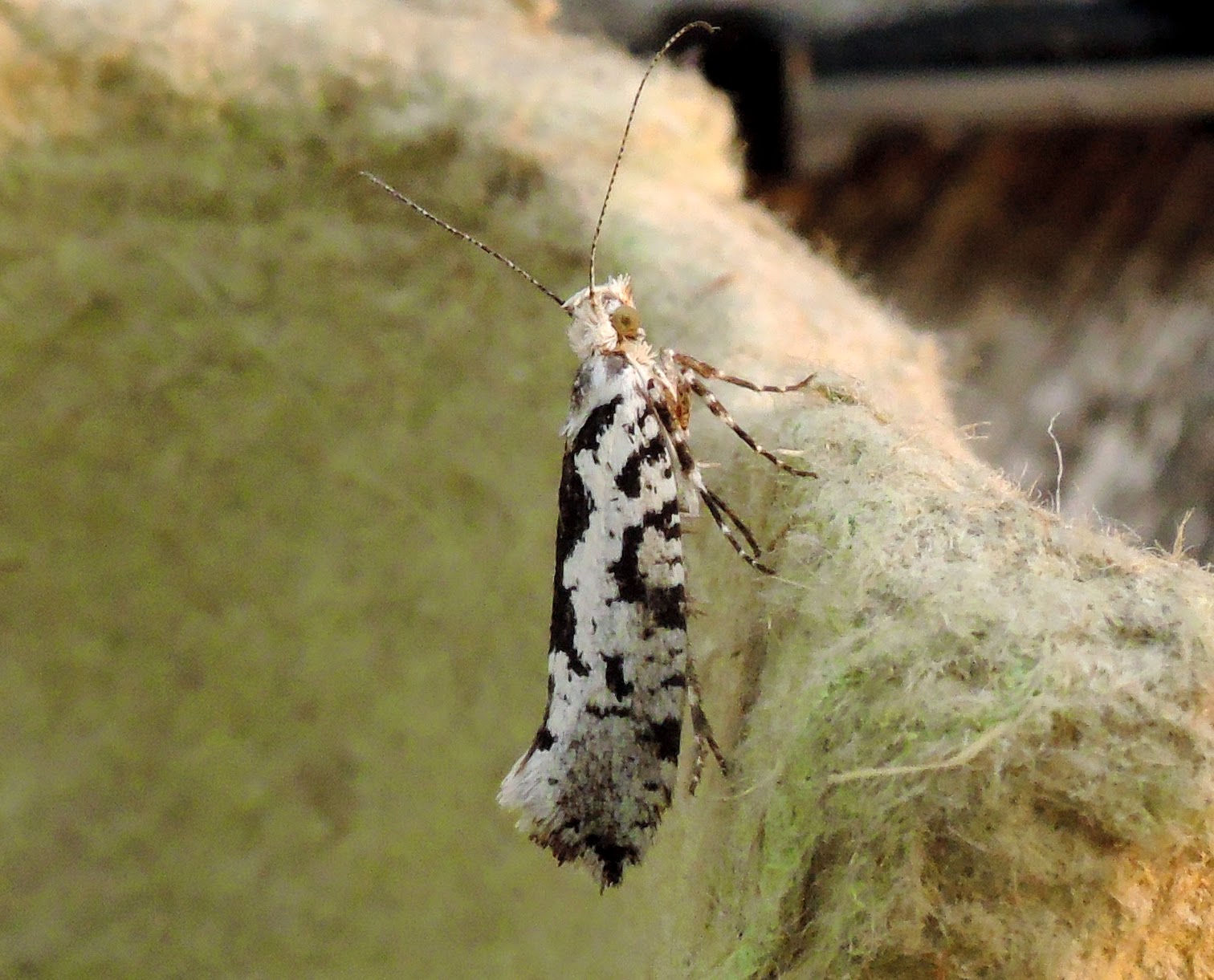I payed my first visit to Burry Port today, around five miles to the west of Llanelli and at the mouth of the Loughor Estuary. Again I got distracted on the way, this time by gulls. The first ringed bird was a
Black-headed Gull, white 2V19, which was ringed at a breeding colony in Gloucestershire in 2009. My recovery was its first - birders really need to look harder for ringed birds!
 |
| Black-headed Gull - white 2V19 |
A scan of the exposed sand banks off Llanelli gave a good count of 58
Mediterranean Gulls. Amongst the closer birds, I was able to read five rings. All from either France or Belgium. I was almost able to read a sixth Med with a red ring (from the Czech Republic), but I just can't make out the last three digits/letters.
The sand bars off Burry Port and Pembrey Harbour had 70
Sandwich Terns roosting on them with a further 15+
Mediteranian Gulls. While looking out to sea, four terns came into my field of view flying head on. As one turned its head I could see that they were 'commic' terns. They dropped in with the Sandwich Terns and I was able to see they they were
Common Terns.
 |
| Common Terns |
A late
Sand Martin flew through with the
Swallows, and three
Wheatear and a
Stonechat were on the harbour wall. On the beach there was a sizable flock of
Ringed Plover, a few
Dunlin, a juvenile
Sanderling, and two
Bar-tailed Godwit were with the
Oystercatcher flock.
A visit to Delta Lake on the way back revealed that the
Little Gull was still present. Just as I had packed up my optics ready to leave, a
Whinchat popped up on some brambles right in front of me. Luckily it stayed in the same perch the whole time in took me to set my scope set up again, and I managed to get a really good shot of this lovely species.
 |
| Whinchat |
 |
| Little Gull |

















































